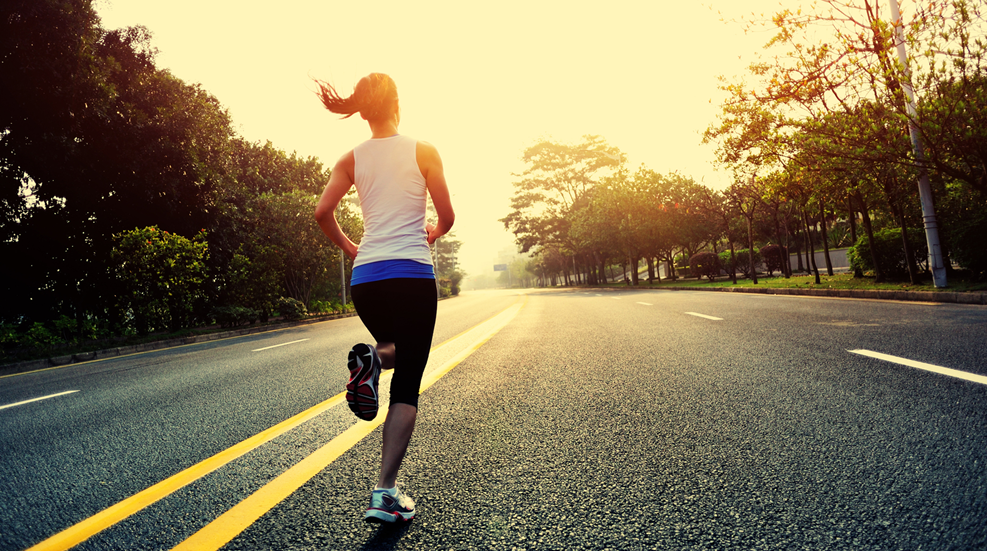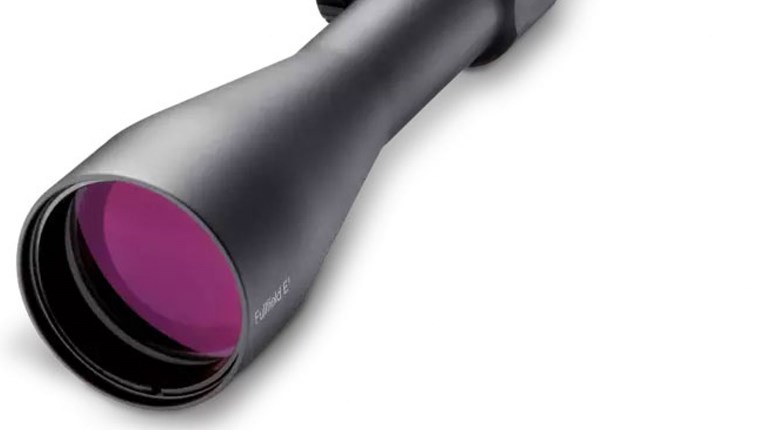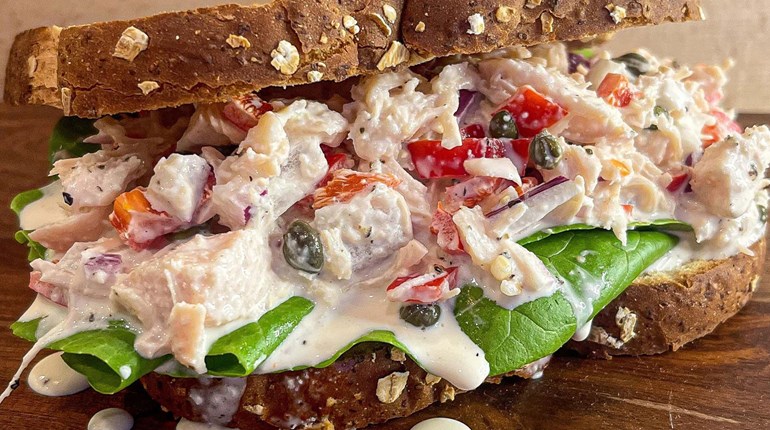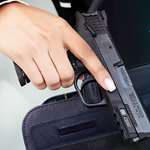
If you like to exercise outdoors, particularly if you run or jog, you might be interested in carrying a firearm with you for protection. Even if you’re an experienced concealed carrier, this is an entirely different ballgame, thanks to all the bouncing motion and the wardrobe involved. What do runners need to consider?
First things first: Safety. This is the case for all concealed carriers, which is why I only recommend holsters that cover the trigger guard completely. But runners have an additional safety consideration: Retention, or how to keep the gun securely attached to your body with all the motion that running generates.
Option 1: Open Carry
You know who else runs with holstered handguns? Police officers and competition shooters. Both generally use open-carry, outside-the-waistband holsters that hold the gun secure during movement. The three big benefits of carrying this way, as far as runners are concerned, are:
It’s comfortable, which means…
You can comfortably carry a larger gun than you might if you were trying to conceal it.
Access is as fast as it gets.
The downsides of open carry are that it isn’t legal everywhere, and where it is, it can draw unwanted attention depending on where you are and who sees you. In addition, OWB holsters, which are the most secure, generally depend on a belt—and your running attire might not be belt-friendly.

Option 2: A Fanny Pack
I’m too middle-aged to care about trends, but I understand sling bags or fanny packs are back in style. Whether you wear it crossbody-style across your chest or around your waist the old-school way, a pack like this can be a great place for a concealed handgun if the bag is worn tight enough that it won’t shift or bounce with every step. Do not just grab any cheap nylon bag, throw your gun it in loose and expect things not to bounce around wildly and create a serious safety hazard! I recommend you buy a pack with a built-in holster—loads of companies are making concealed-carry fanny packs these days—and practice drawing your unloaded gun from it. It might take a bit of experimentation to find the carrying position that allows for the easiest, fastest draw.
As long as you don’t buy one in camo or cover it in gun patches or something, this is a very low-key, gray-man option. No one will ever know what’s in there!

Option 3: Belly Bands
The cool thing about belly bands is the versatility—you can use them to wear the gun almost anywhere on your torso that’s comfortable. I’m more of a walker than a jogger, but my sister runs regularly and swears by her ComfortTac belly band. “I’ve tried many belly bands over the years,” she told me, “but this is the absolute best. It has a strap that goes around the back of the grip to hold it in place, and it never feels like it’s bouncing around.” (Incidentally, she also mentioned that she owns a bra-mounted holster, but it doesn’t hold the gun tight enough for running—which is why that option didn’t make our list.)

Most belly bands are universal-fit or nearly so, which means the handgun sits in an elastic pocket rather than a hard, molded-to-fit holster. I recommend the type with a strap, like ComfortTec, or the type that at least have a built-in hard trigger guard, like the belly band from Mission First Tactical.
You can experiment with wearing the belly band high on your torso or low on your hips, with the gun on your strong side or cross-draw-style on your weak side. The downside is that belly bands do tend to get a little hot (I carried in one in the South for a year and one summer was enough), and you might need to switch to looser-fitting tops if you’re worried about printing.

Option 4: Concealed-Carry Leggings or Undergarments
Several companies make leggings, tank tops, shorts and other athletic wear with built-in holsters. I have not tried any of them, so I can’t speak to how well they retain the gun through bouncing movement, but lots of women love them. If you want to go this route, maybe try it out with a tank top or pair of shorts that you can wear under your regular running clothing before you go and replace your entire workout wardrobe.
Again, most of these have elastic, universal-fit gun pockets, so be careful to find clothing that retains the gun securely, and make sure the elastic is layered thick enough to protect the trigger or that a hard trigger guard of some sort is included or can be added.
Regular or tactical leggings that have belt loops are also a great option. This lets you wear a normal gun belt and use your everyday IWB holster, which is convenient and probably the most secure possible method.
One last note for runners: Many of you aren’t going to like this, but the best way to keep yourself safe is to maintain awareness of what’s going on around you—and that means taking your earbuds out so you can pay attention to your surroundings and better hear if someone is approaching from behind or the side. A strong, practiced attitude of awareness and an effective self-defense tool—your handgun—are a powerful combination that will help keep you safe when exercising outdoors.














































